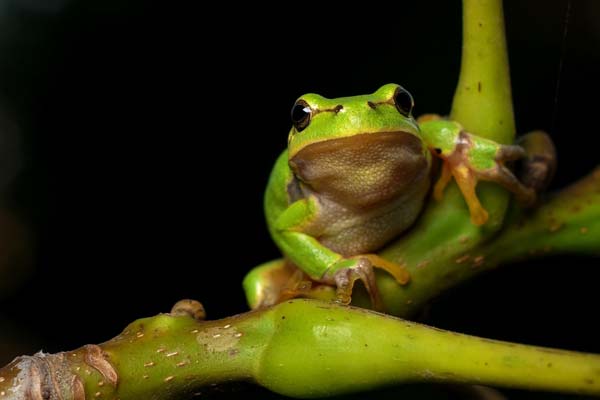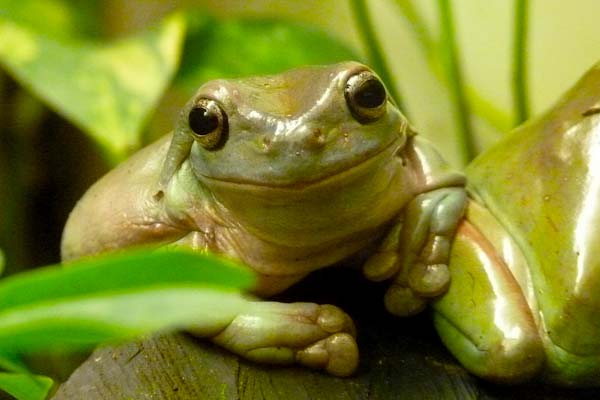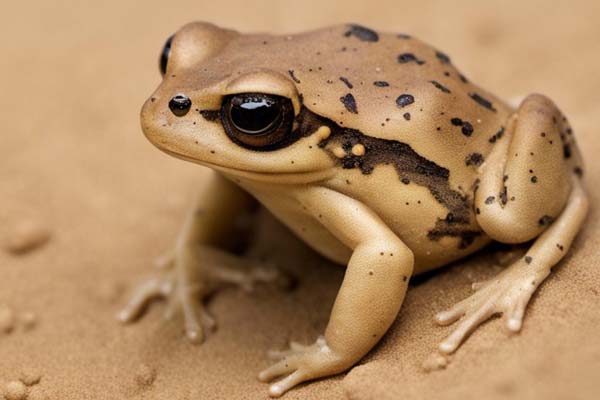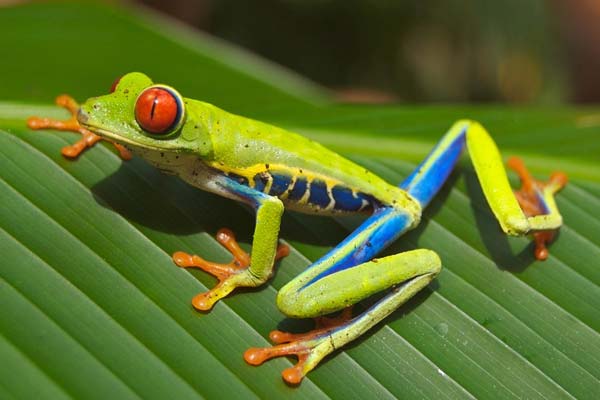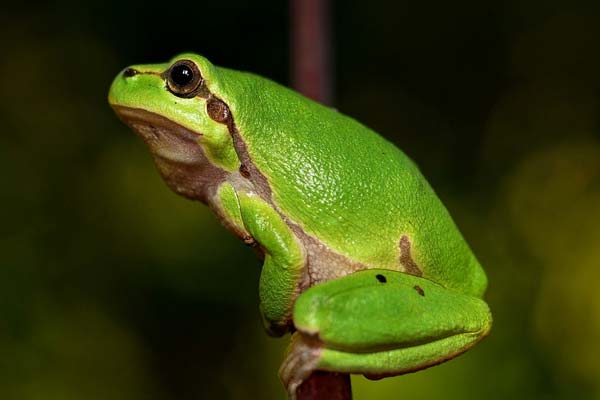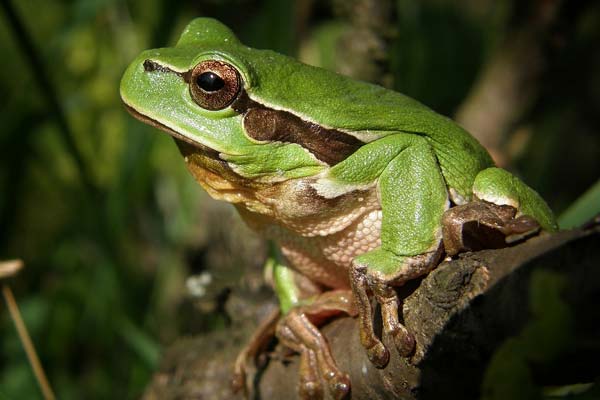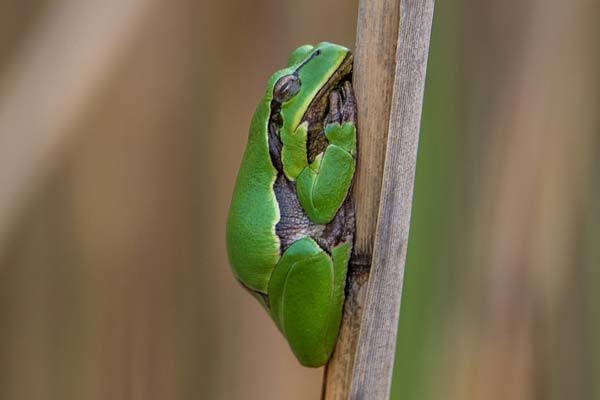Do Tree Frogs Start as Tadpoles? Unraveling the Mystery
Tree frogs are a diverse group of amphibians that are highly adapted for life in or around trees. They are found in various parts of the world, from South America’s rainforests to North America’s temperate forests.
Tree frogs have unique characteristics that enable them to climb and cling to branches, leaves, and other surfaces in their arboreal habitats.
One of the intriguing questions about tree frogs is whether they start as tadpoles. Most frog species undergo a metamorphosis, transforming from aquatic tadpoles to terrestrial adults.
However, not all tree frog species follow this pattern. Some tree frogs lay their eggs on leaves or in tree holes, and the tadpoles develop within the protective confines of their eggs or the water-filled cavities. Therefore, the question of whether tree frogs start as tadpoles depends on the species.
Tree Frog Life Cycle
Tree frogs go through a unique life cycle that involves metamorphosis from a tadpole to an adult frog. This section will explore the different stages of the tree frog life cycle, focusing on the tadpole stage.
Tadpole Stage
The tree frog life cycle begins when the female lays eggs in water or on vegetation near water. The eggs hatch into tadpoles, aquatic larvae with gills that allow them to breathe underwater. Tadpoles have a long tail, which they use for swimming, and they are typically herbivorous, feeding on algae and other aquatic plants.
As the tadpoles grow, they develop hind and front legs, allowing them to crawl out of the water and onto land. During this time, they also develop lungs and lose their gills. The tail is eventually absorbed into the body, and the tadpole undergoes metamorphosis into an adult frog.
The length of the tadpole stage varies depending on the species of tree frog and environmental factors like temperature and food availability. Some tree frog species have a shorter tadpole stage, while others may take several months to complete metamorphosis.
During the tadpole stage, tree frog larvae are vulnerable to predators like fish, birds, and other aquatic animals. To avoid predation, some tree frog species lay their eggs in foam nests on vegetation above the water. In contrast, others deposit their eggs directly into tree holes or other moist environments.
In addition to predators, tree frog tadpoles are susceptible to pollution and habitat destruction. Conservation efforts are underway to protect tree frog species and their habitats, which include forests, swamps, and seasonal pools.
Tree Frog Species with Tadpole Stage
Most tree frog species start their lives as tadpoles adapted for an aquatic lifestyle.
The tadpole stage of tree frogs can last from a few weeks to several months. During this stage, they undergo a series of metamorphoses before they become adult frogs.
The tadpoles of most tree frog species have tails and gills and lack limbs. They are also herbivorous and feed on algae and plant matter. The following are some notable tree frog species with unique tadpole features:
Red-eyed tree frog (Agalychnis callidryas): The tadpoles of this species have a bright red tail, which serves as a warning to potential predators. They also have a transparent body, making observing their internal organs easier.
Green tree frog (Hyla cinerea): The tadpoles of this species have a distinctive black stripe on their tails. They are also known for their fast growth rate and can undergo metamorphosis in as little as six weeks.
White’s tree frog (Litoria caerulea): The tadpoles of this species are relatively large and can grow up to 10 cm in length. They are also known for their voracious appetite and can quickly consume much food.
Australian green tree frog (Litoria splendida): The tadpoles of this species have a distinctive orange stripe on their tails. They are also known for their ability to change color depending on their environment.
Tree Frog Species without Tadpole Stage
Not all tree frog species have a tadpole stage in their life cycle. These species have evolved unique breeding strategies and adaptations to survive in environments with low availability of cool surface water suitable for tadpoles to live in. Instead of laying eggs and going through a tadpole stage, they undergo direct development or live birth.
The common coquí, a tree frog species in Puerto Rico, demonstrates direct development without a tadpole stage. The female lays eggs, which hatch into fully developed froglets capable of surviving on land. These froglets are placed in moist environments to facilitate their ongoing development.
In South America, the Surinam horned frog exhibits another distinctive reproductive strategy. This species lays eggs on land, and the male guards them until they hatch. The resulting froglets emerge from the eggs fully formed and ready for a terrestrial lifestyle.
These tree frog species have evolved unique reproductive strategies and adaptations to survive in their respective environments. While they may not have a tadpole stage, they can still reproduce and continue their species successfully.
Disadvantages of Having a Tadpole Stage
Tree frogs are known for their unique life cycle, which involves a tadpole stage before they transform into adult frogs. While this stage is essential for the survival of many frog species, it also presents several disadvantages and challenges. This section will explore some challenges tadpoles face and the environmental factors that affect their survival.
Predation Risks
Tadpoles are vulnerable to predation from various predators, including fish, birds, insects, and other aquatic animals. They cannot defend themselves and are often an easy target for predators. This makes the tadpole stage a critical period in the life cycle of tree frogs, as they must avoid predation to survive.
Environmental Factors
The survival of tadpoles is also heavily dependent on several environmental factors, including water quality, temperature, and food availability. Poor water quality can lead to the death of tadpoles, while extreme temperatures can cause developmental delays or even death. Additionally, food availability can be a significant challenge for tadpoles, especially in areas with high resource competition.
Defense Mechanisms of Tadpoles
Tadpoles are in the larval stage of frogs and are known for their unique defense mechanisms against predators. These mechanisms help ensure tadpoles’ survival in their aquatic environment until they metamorphose into adult frogs.
Overview of Tadpole Defense Mechanisms Against Predators
Tadpoles have evolved various defense mechanisms to protect themselves from predators. Some of these mechanisms are physical, while others are behavioral. Physical defenses include body armor, spines, and camouflage, while behavioral defenses include hiding and jumping.
One of the most common physical defenses of tadpoles is their body armor. Tadpoles have a layer of mucus that covers their skin, which makes it difficult for predators to grab them. Some tadpoles also have spines or sharp edges on their bodies that can cause discomfort or pain to predators.
Tadpoles use camouflage to protect themselves by changing their color to match their surroundings, making it hard for predators to see them. Some tadpoles also have patterns on their bodies that look like their environment, making them even more challenging to spot.
Behavioral defenses of tadpoles include hiding and jumping. Tadpoles will often hide in vegetation or other structures to avoid predators. Some tadpoles will also jump out of the water to escape predators.
Examples of Defensive Adaptations in Tree Frog Tadpoles
Tree frog tadpoles have evolved unique defensive adaptations that help them survive in their arboreal environment. One of these adaptations is their ability to stick to surfaces. Tree frog tadpoles have a suction cup-like structure on their bellies, allowing them to stick to leaves and other surfaces.
Another adaptation of tree frog tadpoles is their ability to change their body shape to flatten their bodies to fit into narrow crevices or expand their bodies, making it difficult for predators to swallow them.
Conclusion
In conclusion, tree frogs typically begin their lives as tadpoles. As tadpoles, they reside in water and breathe using gills. After a few weeks, they undergo metamorphosis, becoming tiny tree frogs adapted for land living. During this transformation, they lose their gills and acquire lungs for breathing. Their tail gradually shortens and is eventually absorbed into their body.
However, it is essential to note that not all frog species start as tadpoles. Some species, such as the direct-developing frog, skip the tadpole stage and hatch as miniature versions of adult frogs.
The length of the tadpole stage varies depending on the species and external conditions. For example, a wood frog tadpole usually metamorphoses into a froglet within two or three months after hatching in the northeastern United States. The time is shorter when there are higher water temperatures and ample food and longer when there is colder water and less food.

